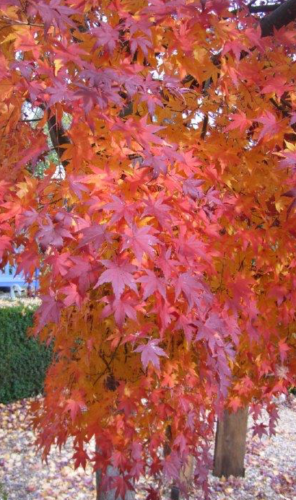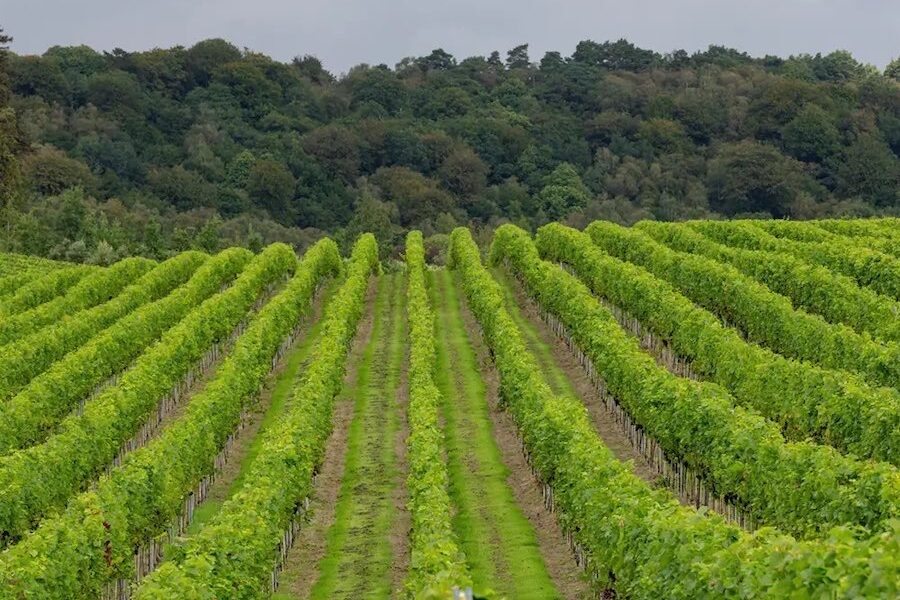Gardening columnist CEDRIC BRYANT says now’s the time to get looking for colourful autumn trees.
NATURE is truly amazing, irrespective of climate change. Deciduous trees and shrubs know exactly when the leaves should change colour and shed, and when to produce new growth and leaves.

If there’s no rain, these trees will lose their leaves earlier due to the dryness of the soil. The problem with heavy storm rain is that it simply runs off, rather than soaking down to the root zone.
Looking to add autumn colour? The time to look in the garden centres is now. The leaf colour of many trees of the same variety, such as maples, can vary considerably, whether they have been propagated from seed rather than cuttings or grafting.
The latter are cloned and will come true to the parent plant. You may see half a dozen trees in garden centres all labelled Acer palmatum, and yet the leaf colour can vary quite considerably from tree to tree.

If planting trees this autumn, a perfect time, keep in mind the size of a tree, shown clearly on most labels. For example if a tree grows to eight metres tall, you will need to plant it at least eight metres from the home or other buildings on the block. Unfortunately, blocks are rapidly being reduced in size, some even down to 270 square metres. As a result there is no space for even reasonable-sized shrubs, let alone trees.
In new suburbs it will be many years before there is sufficient protection from mature trees to shelter delicate maples or dogwoods. However, in many older suburbs this will not be a problem.
COMMERCIAL horticulturists and home gardeners are being encouraged to desist from using peat.
When we owned a nursery in Yass, many years ago, we used to buy peat moss to add to our own potting mix for greater water retention. In addition, peat is beneficial when added to the soil for all acid-loving plants from natives to daphne and rhododendrons.

We would buy it in huge bales, mainly from Russian peat bogs. However, horticultural practices have moved on, and today we like to see peat stay in the ground.
Peat has been some of the world’s most important carbon sinks; that is, until now. Peat bogs are drying out and could become a source of emissions, worsening climate change.
In many countries peat is still a primary source of heating homes. Rising temperatures have also had an impact on the drying-out process, resulting in peat bogs switching from absorbing carbon to releasing it into the atmosphere.
AS we move into bulb-planting time, it may be appropriate to dig up and relocate those planted in the wrong spot. Over the years, both natural mulch from falling leaves and mulch added by the gardener means the bulbs gradually get deeper. By the time they have fought their way to the surface spring has gone.
The rule of thumb recommended by Dutch bulb growers is to dig these up and replant to a depth the same as the bulb is thick. If for example a daffodil bulb is six centimetres thick, replant it six centimetres deep and water in with liquid seaweed.
Who can be trusted?
In a world of spin and confusion, there’s never been a more important time to support independent journalism in Canberra.
If you trust our work online and want to enforce the power of independent voices, I invite you to make a small contribution.
Every dollar of support is invested back into our journalism to help keep citynews.com.au strong and free.
Thank you,
Ian Meikle, editor




Leave a Reply